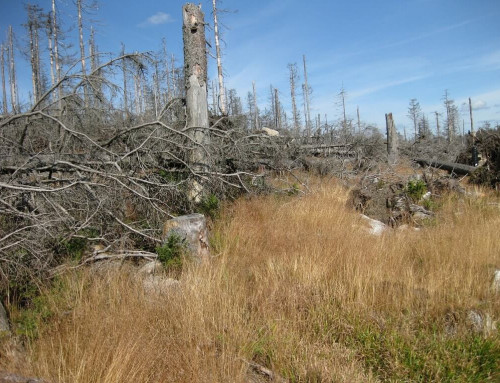
A house and vehicle covered in snow. Image by Novinite.
ZIMSEC O Level Geography Notes: Frost/Snow and Hail.
Snow/Frost
- Caused by a sudden fall or drop in temperature.
- With snow ice crystals are formed in the atmosphere.
- When these small ice crystals collide with one another they stick together in the clouds to become snow flakes.
- When they become heavy enough to overcome updrafts they fall to the ground as snow.
- Temperatures need not be below 0°C for snow to fall, in fact in most places most of the snow falls when temperatures are between 0°C and 2°C.
- With frost condensation occurs typically overnight.
- Water droplets are deposited onto surfaces of objects and vegetation.
- As temperatures continue to fall the water droplets are transformed into a layer of ice on these objects.
- Snow does not occur in Zimbabwe although it occurs in the lower latitude areas of South Africa. It rarely snows in Johannesburg.
Effects of snow or blizzards.
- Flights are grounded in cases of extreme snow/snowstorms (these are called blizzards)
- Entertainment events that take place outdoors like football, baseball, cricket etc have to be cancelled.
- Buildings and equipment can be buried making them inaccessible.
- Excessive snow build up has been known to cause buildings such as barns to collapse killing occupants.
- Roads are blocked.
- Roads become slippery and difficult to navigate leading to accidents, pile ups and congestion.
- Vegetation and crops are destroyed.
- Deaths due to accidents and direct hypothermia and pneumonias.
Solutions
- Growing crops in green houses.
- Spray crops with warm water jets or blowing air so it gets mixed with the warmer upper layers.
- Using smudge pots to heat orchards and fields.
- Covering plants with plastics that trap sunlight inside.
- Growing crops in high tunnels.
- Clearing snow from roads using heavy machinery on a frequent and regular basis.
- Using rock salt to clear roads and to prevent snow build up.
- Use special winter tires on vehicles; these have a better grip as normal tire treads are ineffective in snow conditions.
- Using heating systems in homes.
- These heating systems can be made more effective by using insulating materials on homes.
N.B Frosts normally affects agriculture. It kills important food crops such as potatoes and tomatoes which tend to be susceptible to frost. It can also lead to frost bite in humans and even death due to hypothermia in extreme cases. In addition to the measures against snow above people can wear warm clothes and gloves to mitigate the effects.
Hail
- A solid form of precipitation.
- Involves solid ice balls falling from the sky instead of rain drops.
- When it is mixed with water, precipitation it is called sleet.
- The effects of sleet and hail are the same.
Effects
- Hail does extensive damage to crops especially Tobacco whose quality is greatily affected by such things as leaf size.
Solutions
- Growing crops in sheltered places as in a green house although this quickly gets expensive especially if the hectarage is large.
- Agricultural shade cloth such as the one pictured below is often used especially with pot.
- Farmers should make use of insurance schemes to lessen the financial impact.

Crops growing under an agricultural shade cloth. Image Haygrove.
To access more topics go the Geography Notes page.



